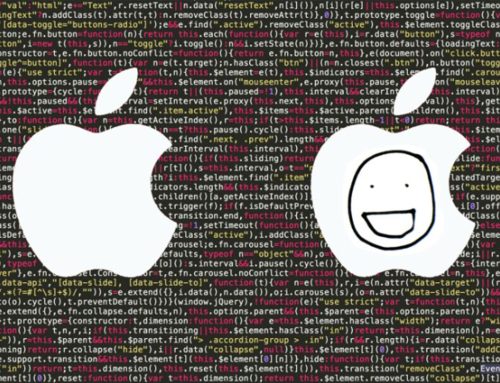Vulnerabilities in Apple Products
Apple
December 12, 2024
Multiple vulnerabilities have been discovered in Apple products, the most severe of which could allow for arbitrary code execution. Successful exploitation of the most severe of these vulnerabilities could allow for arbitrary code execution in the context of the logged on user. Depending on the privileges associated with the user, an attacker could then install programs; view, change, or delete data; or create new accounts with full user rights. Users whose accounts are configured to have fewer user rights on the system could be less impacted than those who operate with administrative user rights.
THREAT INTELLIGENCE:
There are currently no reports of the vulnerabilities being exploited.
SYSTEMS AFFECTED:
- Versions prior to Safari 18.2
- Versions prior to iOS 18.2 and iPadOS 18.2
- Versions prior to iPadOS 17.7.3
- Versions prior to macOS Sequoia 15.2
- Versions prior to macOS Sonoma 14.7.2
- Versions prior to macOS Ventura 13.7.2
- Versions prior to watchOS 11.2
- Versions prior to tvOS 18.2
- Versions prior to visionOS 2.2
RISK:
Government:
- Large and medium government entities: High
- Small government entities: Medium
Businesses:
- Large and medium business entities: High
- Small business entities: Medium
Home users: Low
TECHNICAL SUMMARY:
Multiple vulnerabilities have been discovered in Apple products, the most severe of which could allow for arbitrary code execution. Details of the vulnerabilities are as follows:
Tactic: Execution (TA0002):
Technique: Exploitation for Client Execution (T1203):
- A remote attacker may cause an unexpected app termination or arbitrary code execution. (CVE-2024-45490)
- An app may be able to execute arbitrary code with kernel privileges. (CVE-2024-54529)
- Running a mount command may unexpectedly execute arbitrary code. (CVE-2024-54489)
- An attacker may be able to cause unexpected system termination or arbitrary code execution in DCP firmware. (CVE-2024-54506)
- An app may be able to elevate privileges. (CVE-2024-54465)
Additional lower severity vulnerabilities include:
- On a device with Private Relay enabled, adding a website to the Safari Reading List may reveal the originating IP address to the website. (CVE-2024-44246)
- Processing maliciously crafted web content may lead to an unexpected process crash. (CVE-2024-54479, CVE-2024-54502, CVE-2024-54508)
- Processing maliciously crafted web content may lead to memory corruption. (CVE-2024-54505, CVE-2024-54534)
- A malicious app may be able to access private information. (CVE-2024-54526)
- An app may be able to access sensitive user data. (CVE-2024-54527, CVE-2024-54513)
- Muting a call while ringing may not result in mute being enabled. (CVE-2024-54503)
- Processing a maliciously crafted font may result in the disclosure of process memory. (CVE-2024-54486)
- Processing a maliciously crafted image may result in disclosure of process memory. (CVE-2024-54500)
- An attacker may be able to create a read-only memory mapping that can be written to. (CVE-2024-54494)
- An app may be able to leak sensitive kernel state. (CVE-2024-54510)
- An app may be able to cause unexpected system termination or corrupt kernel memory. (CVE-2024-44245)
- An app may be able to break out of its sandbox. (CVE-2024-54514, CVE-2024-54498)
- An app may be able to gain elevated privileges. (CVE-2024-44225)
- An attacker in a privileged network position may be able to alter network traffic. (CVE-2024-54492)
- Processing a maliciously crafted file may lead to a denial of service. (CVE-2024-54501)
- An attacker with physical access to an iOS device may be able to view notification content from the lock screen. (CVE-2024-54485)
- Processing a malicious crafted file may lead to a denial-of-service. (CVE-2024-44201)
- An attacker with physical access to an iPadOS device may be able to view notification content from the lock screen. (CVE-2024-54485)
- An app may be able to access user-sensitive data. (CVE-2024-54477, CVE-2024-54484, CVE-2024-54504, CVE-2024-54474, CVE-2024-54476)
- Parsing a maliciously crafted video file may lead to unexpected system termination. (CVE-2024-44220)
- A local attacker may gain access to user’s Keychain items. (CVE-2024-54490)
- An app may be able to access protected user data. (CVE-2024-44300)
- An encrypted volume may be accessed by a different user without prompting for the password. (CVE-2024-54466)
- A malicious app may be able to gain root privileges. (CVE-2024-44291, CVE-2024-54515, CVE-2024-44224)
- An app may be able to bypass kASLR. (CVE-2024-54531)
- A malicious application may be able to determine a user’s current location. (CVE-2024-54491)
- An app may be able to modify protected parts of the file system. (CVE-2023-32395, CVE-2024-44243, CVE-2024-54495)
- An app may be able to overwrite arbitrary files. (CVE-2024-54528)
- A malicious app may be able to access arbitrary files. (CVE-2024-54524)
- Privacy indicators for microphone access may be attributed incorrectly. (CVE-2024-54493)
- A user with screen sharing access may be able to view another user’s screen. (CVE-2024-44248)
Successful exploitation of the most severe of these vulnerabilities could allow for arbitrary code execution in the context of the logged on user. Depending on the privileges associated with the user, an attacker could then install programs; view, change, or delete data; or create new accounts with full user rights. Users whose accounts are configured to have fewer user rights on the system could be less impacted than those who operate with administrative user rights.
RECOMMENDATIONS:
We recommend the following actions be taken:
- Apply the stable channel update provided by Apple to vulnerable systems immediately after appropriate testing. (M1051: Update Software)
- Safeguard 7.1 : Establish and Maintain a Vulnerability Management Process: Establish and maintain a documented vulnerability management process for enterprise assets. Review and update documentation annually, or when significant enterprise changes occur that could impact this Safeguard.
- Safeguard 7.2 : Establish and Maintain a Remediation Process: Establish and maintain a risk-based remediation strategy documented in a remediation process, with monthly, or more frequent, reviews.
- Safeguard 7.6 : Perform Automated Vulnerability Scans of Externally-Exposed Enterprise Assets: Perform automated vulnerability scans of externally-exposed enterprise assets using a SCAP-compliant vulnerability scanning tool. Perform scans on a monthly, or more frequent, basis.
- Safeguard 7.7 : Remediate Detected Vulnerabilities: Remediate detected vulnerabilities in software through processes and tooling on a monthly, or more frequent, basis, based on the remediation process.
- Safeguard 16.13 Conduct Application Penetration Testing: Conduct application penetration testing. For critical applications, authenticated penetration testing is better suited to finding business logic vulnerabilities than code scanning and automated security testing. Penetration testing relies on the skill of the tester to manually manipulate an application as an authenticated and unauthenticated user.
- Safeguard 18.1 : Establish and Maintain a Penetration Testing Program: Establish and maintain a penetration testing program appropriate to the size, complexity, and maturity of the enterprise. Penetration testing program characteristics include scope, such as network, web application, Application Programming Interface (API), hosted services, and physical premise controls; frequency; limitations, such as acceptable hours, and excluded attack types; point of contact information; remediation, such as how findings will be routed internally; and retrospective requirements.
- Safeguard 18.2 : Perform Periodic External Penetration Tests: Perform periodic external penetration tests based on program requirements, no less than annually. External penetration testing must include enterprise and environmental reconnaissance to detect exploitable information. Penetration testing requires specialized skills and experience and must be conducted through a qualified party. The testing may be clear box or opaque box.
- Safeguard 18.3 : Remediate Penetration Test Findings: Remediate penetration test findings based on the enterprise’s policy for remediation scope and prioritization.
- Apply the Principle of Least Privilege to all systems and services. Run all software as a non-privileged user (one without administrative privileges) to diminish the effects of a successful attack. (M1026: Privileged Account Management)
- Safeguard 4.7: Manage Default Accounts on Enterprise Assets and Software: Manage default accounts on enterprise assets and software, such as root, administrator, and other pre-configured vendor accounts. Example implementations can include: disabling default accounts or making them unusable.
- Safeguard 5.4: Restrict Administrator Privileges to Dedicated Administrator Accounts: Restrict administrator privileges to dedicated administrator accounts on enterprise assets. Conduct general computing activities, such as internet browsing, email, and productivity suite use, from the user’s primary, non-privileged account.
- Restrict use of certain websites, block downloads/attachments, block Javascript, restrict browser extensions, etc. (M1021: Restrict Web-Based Content)
- Safeguard 2.3: Address Unauthorized Software: Ensure that unauthorized software is either removed from use on enterprise assets or receives a documented exception. Review monthly, or more frequently.
- Safeguard 2.7: Allowlist Authorized Scripts: Use technical controls, such as digital signatures and version control, to ensure that only authorized scripts, such as specific .ps1, .py, etc., files, are allowed to execute. Block unauthorized scripts from executing. Reassessbi-annually, or more frequently.
- Safeguard 9.3: Maintain and Enforce Network-Based URL Filters: Enforce and update network-based URL filters to limit an enterprise asset from connecting to potentially malicious or unapproved websites. Example implementations include category-based filtering, reputation-based filtering, or through the use of block lists. Enforce filters for all enterprise assets.
- Safeguard 9.6: Block Unnecessary File Types: Block unnecessary file types attempting to enter the enterprise’s email gateway.
- Use capabilities to detect and block conditions that may lead to or be indicative of a software exploit occurring. (M1050: Exploit Protection)
- Safeguard 10.5: Enable Anti-Exploitation Features: Enable anti-exploitation features on enterprise assets and software, where possible, such as Microsoft® Data Execution Prevention (DEP), Windows® Defender Exploit Guard (WDEG), or Apple® System Integrity Protection (SIP) and Gatekeeper™.
- Block execution of code on a system through application control, and/or script blocking. (M1038: Execution Prevention)
- Safeguard 2.5 : Allowlist Authorized Software: Use technical controls, such as application allowlisting, to ensure that only authorized software can execute or be accessed. Reassess bi-annually, or more frequently.
- Safeguard 2.6 : Allowlist Authorized Libraries: Use technical controls to ensure that only authorized software libraries, such as specific .dll, .ocx, .so, etc., files, are allowed to load into a system process. Block unauthorized libraries from loading into a system process. Reassess bi-annually, or more frequently.
- Safeguard 2.7 : Allowlist Authorized Scripts: Use technical controls, such as digital signatures and version control, to ensure that only authorized scripts, such as specific .ps1, .py, etc., files, are allowed to execute. Block unauthorized scripts from executing. Reassess bi-annually, or more frequently.
- Use capabilities to prevent suspicious behavior patterns from occurring on endpoint systems. This could include suspicious process, file, API call, etc. behavior. (M1040: Behavior Prevention on Endpoint)
- Safeguard 13.2 : Deploy a Host-Based Intrusion Detection Solution: Deploy a host-based intrusion detection solution on enterprise assets, where appropriate and/or supported.
- Safeguard 13.7 : Deploy a Host-Based Intrusion Prevention Solution: Deploy a host-based intrusion prevention solution on enterprise assets, where appropriate and/or supported. Example implementations include use of an Endpoint Detection and Response (EDR) client or host-based IPS agent.
CVE:
https://cve.mitre.org/cgi-bin/cvename.cgi?name=CVE-2023- 32395





